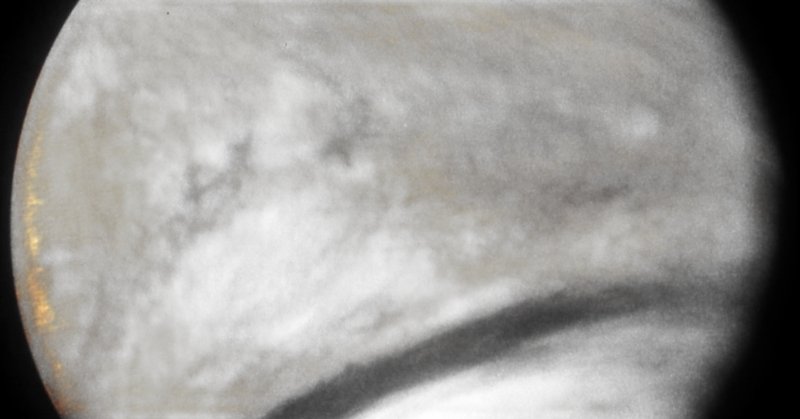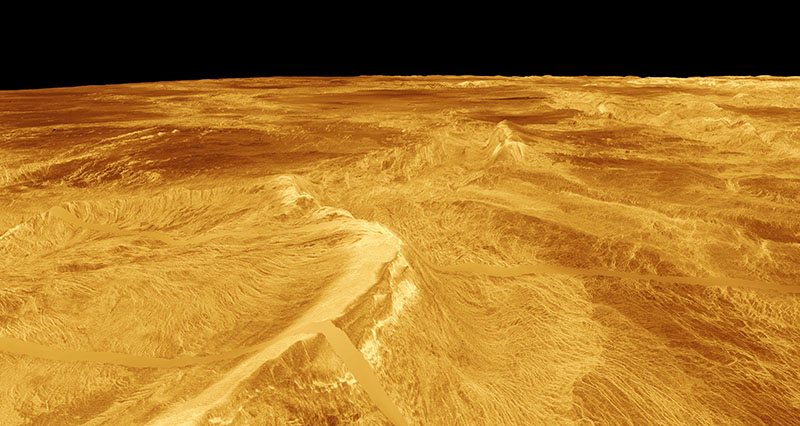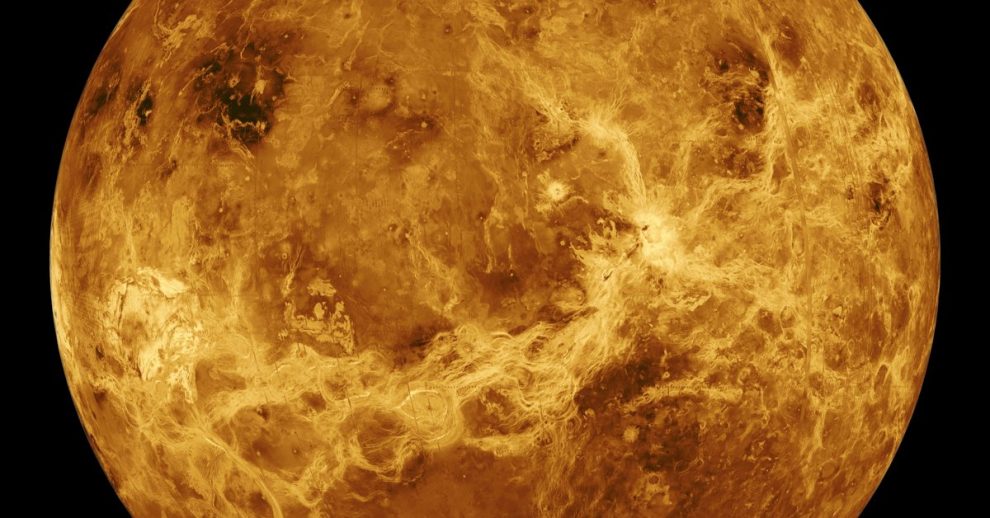Venus, often called Earth’s “sister planet,” is an enigmatic world with a host of fascinating features. From its extreme weather patterns to its volcanic landscape and puzzling atmosphere, Venus remains one of the most intriguing planets in our solar system.
Venus: Named for Its Phases

1. Venus derives its name from its phases, alternating between a “morning star” and an “evening star” every 9.5 months. This cycle approximately matches the length of a human pregnancy, leading to the planet being named after Venus, the Roman goddess of love. The ancient Romans observed these phases and associated them with the goddess’s attributes of beauty and fertility.
2. Contrary to popular belief, Venus is closer to Earth than Mars. The average distance from Earth to Venus is about 25,724,767 miles, while the Earth-Mars distance is approximately 48,678,219 miles.
3. The Soviet Union was the first and only country to explore Venus’s surface successfully. While the United States focused on Mars, the Soviets sent numerous probes to Venus, with eight successfully landing and transmitting data. Between 1961 and 1984, the Soviet Venera program achieved major successes, capturing the first images of Venus’s hot, inhospitable landscape despite the harsh conditions that limited the landers’ lifespans.
4. In 1970, the Soviet Venera 7 became the first man-made spacecraft to land on another planet and send back data. After landing on Venus, it transmitted weak signals for 23 minutes, likely due to landing on its side.
5. Launched by the Soviet Union in 1975, Venera 9 was the first spacecraft to transmit photographs from Venus’s surface, surviving 53 minutes to capture black-and-white images of the rocky terrain and dense cloud-covered atmosphere. For the Soviets, the biggest challenge wasn’t landing, but the lens caps: Venera 9-12 struggled with caps that wouldn’t detach, and Venera 14’s cap ended up under a sensor, causing it to test the cap’s properties instead of the soil’s compressibility.
6. Recent NASA climate simulations indicate that early Venus likely had mild, Earth-like surface temperatures and liquid-water oceans for about 2-3 billion years after the planet formed. This means Venus could have remained habitable until roughly 700 million years ago, long enough for life to potentially emerge, at a time when Earth was in a global ice age and had no multicellular animals or land plants yet.
7. Venus’s atmosphere is so thick that it contains four times more nitrogen than Earth’s, even though nitrogen only makes up 3.5% of its atmosphere. The atmosphere primarily consists of 96.5% carbon dioxide, with traces of nitrogen, sulfur dioxide, and other gases.
8. Venus’ atmosphere is 90 times more massive than Earth’s, creating surface pressure equivalent to being 900 meters underwater, strong enough to crush most spacecraft. Its pressure crushed two of the three early Soviet landers at 60,000 feet. Four other probes landed softly without needing parachutes or rockets. The atmosphere is so dense that it’s nearly a supercritical fluid, with properties of both liquid and gas, making movement feel resistant, almost like being underwater.
9. Venus boasts more volcanoes than any other planet in the solar system. As of June 2025, scientists have identified 167 volcanoes over 100 km across (only the Big Island of Hawaii on Earth is comparable in size), with more than 85,000 volcanoes mapped in total.
10. Despite Mercury’s proximity to the sun, Venus is the hottest planet in our solar system. Its thick carbon dioxide-rich atmosphere creates a runaway greenhouse effect, trapping heat and raising surface temperatures to over 800°F (427°C). As a result, Venus’s average temperature surpasses Mercury’s, even though it is more than twice the distance from the sun.
Mysterious Cold Layer on Venus

11. Venus has an unexplained cold layer about 78 miles (125 km) up in its atmosphere, where temperatures reach -283°F (-175°C). This temperature is colder than any part of Earth’s atmosphere. This cold layer defies expectations given the planet’s extreme surface temperatures and remains a mystery.
12. In 2015, NASA developed a comprehensive plan to establish a permanent base on Venus, codenamed HAVOC. The plan involves creating floating stations about 50 kilometers from the surface of Venus. Floating cities above the clouds of Venus may be our best bet for becoming a two-planet species. Conditions there are so similar to Earth that a human wouldn’t need a pressurized suit and gravity. Also, transit times to Venus will be shorter than to Mars. The innovative concept involves helium-filled, solar-powered airships. These would be similar to the Cloud City featured in “The Empire Strikes Back,” providing similar air pressure and slightly lower gravity compared to Earth.
13. Venus spins in the opposite direction to most other planets in our solar system, which has led some to speculate that it may have been a drifting planet our solar system might have “adopted.” Its rotation is also slowing down at an alarming rate. Recent measurements by the Venus Express orbiter revealed that the planet’s rotation period has increased by about 6.5 minutes compared to earlier measurements by NASA’s Magellan probe. This change occurred over a period of just 16 years.
14. Due to its unusual rotation, Venus is the only planet in the solar system where the sun rises in the west and sets in the east. Additionally, Venus does not tilt on its axis, so it experiences no seasons.
15. In 1941, the USS New York opened fire on an object they believed to be a Japanese aircraft, only to discover they were shooting at Venus. Similarly, India’s army reportedly spent six months watching “Chinese spy drones” violating its airspace, only to find out they were actually observing Jupiter and Venus. Venus is the most common UFO sighting because it appears on our horizon and is very bright. It is the second-brightest object in the night sky, right after the moon, and it is bright enough to be seen during the day and cast a shadow at night.
16. On Venus, a day is longer than a year due to its incredibly slow rotation. It takes 243 Earth days for Venus to rotate about its axis, yet it takes only 225 Earth days for Venus to orbit the Sun. This means that, on Venus, a day lasts longer than a year. Despite its slow rotation, Venus’s atmosphere is in a state of super-rotation, circling the planet every four Earth days. This extreme weather phenomenon causes the atmosphere to move at speeds of up to 200 meters per second (about 450 miles per hour) at higher altitudes, creating powerful winds and contributing to its violent weather system.
17. In 1760, French astronomer Guillaume Le Gentil traveled to India to observe Venus. Unfortunately, his ship blew off course, causing him to miss the event. Determined to try again, he stayed in India for eight years, but the sky was too cloudy on the next occasion. When he finally returned home, he discovered that he had been declared dead, his wife had remarried, his estate was plundered, and he had lost his job.
18. In 1962, NASA launched the Mariner 1 spacecraft to Venus, but it missed its target by over 100,000 miles. The failure was traced back to a single misplaced hyphen in the spacecraft’s software code.
19. The planet Venus is nearly identical in size to Earth, with their radii differing by only 201 miles. Earth is the larger of the two. This similarity in size has led to Venus being referred to as Earth’s “sister planet.”
20. Astronomer Percival Lowell believed he was the first person to observe canals on Venus. However, due to a faulty adjustment of his telescope’s eyepiece, he was actually looking at the blood vessels in his eye.
Metal Snow and Acid Rain on Venus

21. On Venus, it snows metals such as lead and bismuth. These metal “snowflakes” contribute to the planet’s snow-capped mountains, where the snow is composed entirely of metal. Additionally, Venus experiences acid rain; however, the droplets evaporate before reaching the ground due to the planet’s extreme temperatures.
22. Core samples have revealed that the gravitational pull of Jupiter and Venus causes shifts in Earth’s orbit every 405,000 years. This phenomenon has been occurring for at least 415 million years. These orbital changes can impact Earth’s climate and environment over long geological timescales.
23. A massive vortex, approximately the size of Europe, exists over Venus’s south pole and is known as the “polar vortex.” This extraordinary storm system features two distinct eyes that move independently at different altitudes, creating a complex and dynamic weather pattern. At the cloud tops, winds can reach speeds of 400 kilometers per hour.
24. Almost all images of Venus are filtered to enhance cloud details or remove clouds entirely. Naturally viewed, the planet appears bright white and nearly featureless due to its complete cloud cover. This thick layer of clouds reflects sunlight, and that’s why it is one of the brightest objects in the night sky.
25. Scientists have detected phosphine in Venus’s atmosphere, raising the possibility of life. While natural processes can produce phosphine, the concentration found suggests it is being continuously replenished. Additionally, the tentative detection of ammonia in Venus’s clouds further supports the possibility of biological activity.











Add Comment